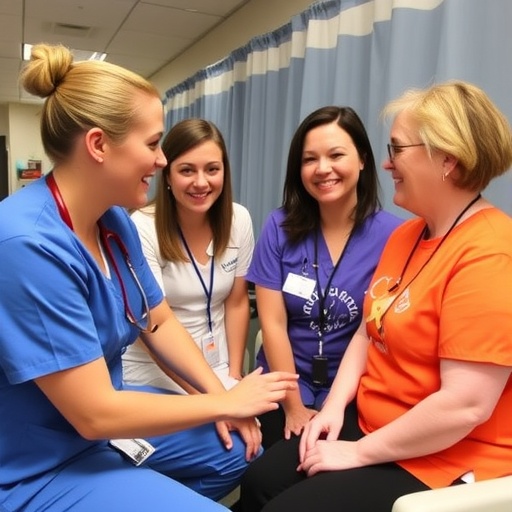US stands out for poor adolescent health compared with other high-income countries
A detailed global study of the health and well being of the world’s 1.8 billion adolescents and young adults reveals a growing inequality – and greater health challenges than those faced 25 years ago. Of the 1.8 billion adolescents aged 10-24, an additional 250 million worldwide are living in countries where they face a triple burden of infectious disease, non-communicable diseases and injuries compared with 1990. The global study provides the first comprehensive and integrated snapshot of young people who make up a third of the world’s population. The findings are published in the Lancet.
“The study demonstrates both success and failure in adolescent health. Health, education, and employment systems have not been able to keep up with shifting adolescent needs and demographic change,” said John Santelli, MD, MPH, professor of Population and Family Health at Columbia University Mailman School of Public Health, and one of the U.S. authors of the report.
The study tracked progress in 12 indicators of adolescent health in 195 countries, including health-risks such as smoking and obesity, and indicators of the social determinants of health such as child marriage and education completion. The findings highlight that adolescent needs are unmet in many settings. The study calls for comprehensive and integrated investments in adolescent health, particularly given the population aged 10-24 years is now the largest in history, at 1.8 billion by 2016.
Compared to similar countries, the U.S. is lagging in preventing injuries, obesity, childbirth, tobacco use, and binge drinking among young people. According to Santelli, the data show that the U.S. is doing well on high school graduation but failing on transiting young people into employment. The percentage of U.S. young adults who are not in education, employment, or training is much higher that comparable nations.
Non-communicable diseases (NCDs) accounted for more than half of the disease burden in adolescents, and were the leading cause of poor health for young adults in every setting. The number of adolescents who are overweight or obese more than doubled between 1990 and 2016. Almost one in five of the world’s adolescents were overweight or obese, a 120 percent increase from the 147.3 million in 1990. In the U.S., poor health caused by injury was higher than in similar high-income countries.
“While there have been great improvements in adolescent health in some countries, the greatest population growth has been in countries where adolescents experience the largest disease burden,” said lead author Peter Azzopardi, Burnet Institute co-head of Adolescent Health who also holds positions with of the Murdoch Children’s Research Institute, and the University of Melbourne.
“Investments in adolescent health have also not kept pace with needs.”
In terms of health risks, the global number of adolescent daily smokers decreased by around 20 percent, from 174 million in 1990 to 136 million in 2016, however, the proportion of smokers in multi-burden countries increased substantially. Prevalence among boys and young men in the U.S. was 9 percent in 2016, and slightly lower for girls (7 percent) compared to the overall agerage of 10 percent. There was a small annual increase of just over 1 percent among girls and women in multi-burden countries.
The number of teenagers aged 15-19 globally who binge drink changed little from 1990. In the U.S. this figure was 34 percent for males but only 13 percent among females.
Gender inequality remains a driver of poor adolescent health. In fact, the prevalence of child marriage between 2013-2016 was over 50 percent in some countries. Globally, the number of 15-24-year-olds not in education, employment or training (NEET) is estimated to be around three times higher for young women (138 million of 421 million) than young men (44 million of 443 million) and can be explained by high rates of adolescent livebirths, which disrupts education and in turn restricts prospects for employment. In the U.S., a relatively high proportion of adolescents were NEET, with over 17 percent of young women and nearly 16 percent of young men aged 15-24 years in this category, compared to around 4 percent for both sexes in the Netherlands and around 11 percent in the UK. At the same time, a relatively low proportion of young American women have their demand for contraception satisfied (71 percent compared to 87 percent in the UK).
“Social and digital media, changing diets, urbanization, armed conflict and migration are some of the forces now shaping adolescent health growth and development, and the world is not keeping up. With a huge rise in the numbers of adolescents growing up in poor countries, the global challenges in adolescent health are now greater than 25 years ago,” said Professor George C. Patton from the Murdoch Childrens Research Institute and University of Melbourne, who in 2016 led the Lancet Commission on adolescent health and well being. “In low-income countries young people make up around 30 per cent of the population but receive less than two per cent of the world’s health investments.”
Drs. Azzopardi, Patton, and Santelli said the research reinforced the case for comprehensive and integrated investments in adolescent health, growth, and development.
###
The research led by the Murdoch Children’s Research Institute, the University of Melbourne and the Burnet Institute, in Melbourne, Australia, builds on the earlier Lancet Commission of Adolescent Health and wellbeing of which John Santelli was a member.
Co- author information and full country breakdowns can be found in the paper, “Progress in adolescent health and wellbeing: tracking 12 headline indicators for 195 countries and territories, 1990-2016.”
The study was funded by the Australian National Health and Medical Research Council and the Bill & Melinda Gates Foundation.
Columbia University Mailman School of Public Health
Founded in 1922, the Columbia University Mailman School of Public Health pursues an agenda of research, education, and service to address the critical and complex public health issues affecting New Yorkers, the nation and the world. The Columbia Mailman School is the third largest recipient of NIH grants among schools of public health. Its over 450 multi-disciplinary faculty members work in more than 100 countries around the world, addressing such issues as preventing infectious and chronic diseases, environmental health, maternal and child health, health policy, climate change & health, and public health preparedness. It is a leader in public health education with over 1,300 graduate students from more than 40 nations pursuing a variety of master’s and doctoral degree programs. The Columbia Mailman School is also home to numerous world-renowned research centers, including ICAP and the Center for Infection and Immunity. For more information, please visit http://www.
Media Contact
Stephanie Berger
[email protected]




